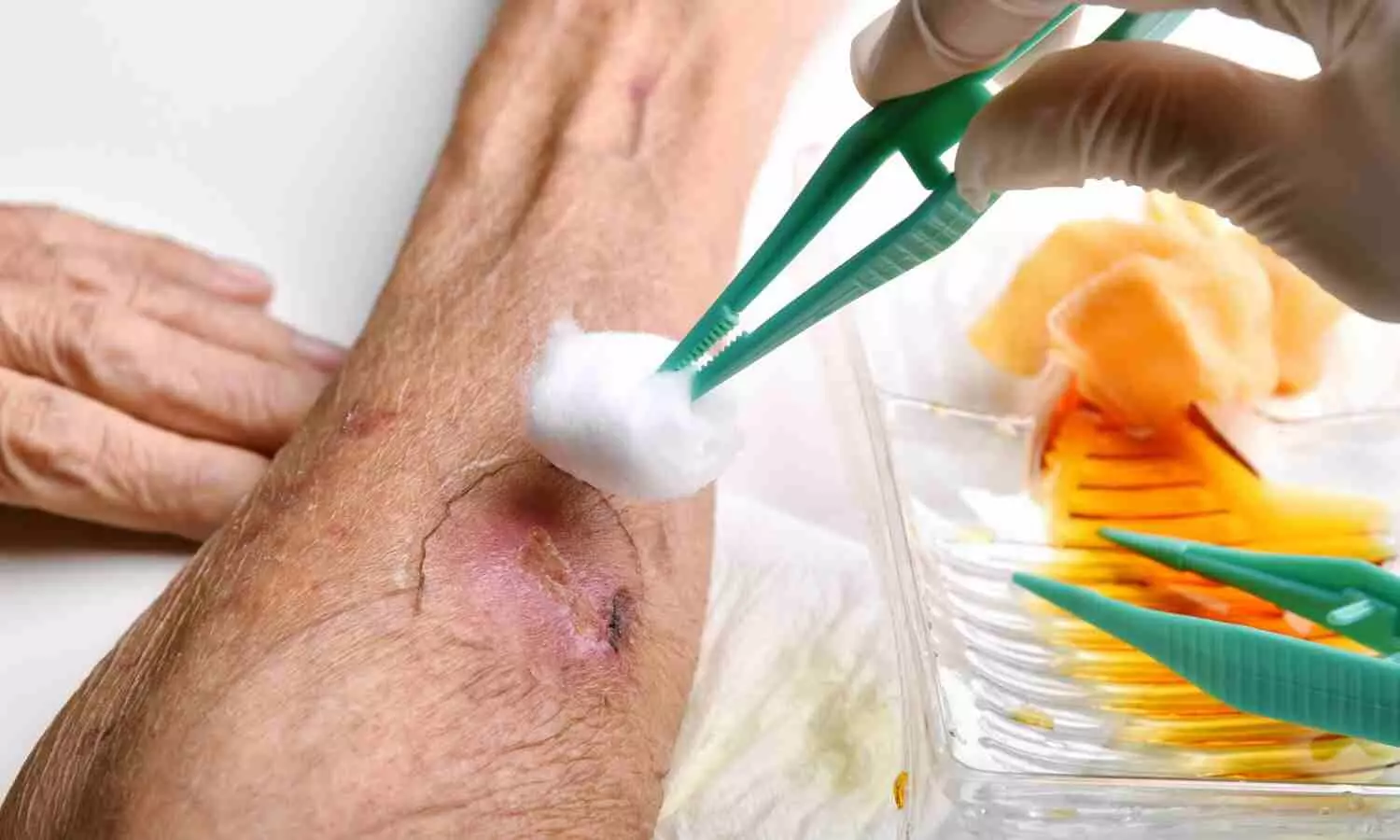Smart hydrogel mimics skin repair to accelerate diabetic wound healing, suggests research
- byDoctor News Daily Team
- 07 November, 2025
- 0 Comments
- 0 Mins

Diabetic wounds remain one of the most challenging complications ofdiabetes, often leading to chronic ulcers,infections, and even amputations. In a groundbreaking development, researchers have engineered a smart hydrogel dressing that replicates the skin’s natural healing process to promote faster and more effectivewound closure. The study, published in theJournal of Bioresources and Bioproducts, introduces a composite hydrogel that integrates bacterial cellulose (BC), conductive polypyrrole (PPy), and platelet-rich plasma (PRP) into a single multifunctional platform. Thehydrogel, referred to as PBP (polypyrrole/bacterial cellulose/platelet-rich plasma), is designed to address the key barriers to diabetic wound healing: persistent inflammation,bacterial infection, and poor tissue regeneration. BC provides a porous, biocompatible scaffold that mimics the extracellular matrix, while PRP—rich in growth factors like VEGF, EGF, and PDGF—supports cell proliferation and angiogenesis. PPy, a conductive polymer, not only enhances the hydrogel’s antibacterial properties through capacitive charging but also enables electrically triggered release of growth factors. In laboratory tests, the charged PBP hydrogel demonstrated over 98% antibacterial efficacy against both E. coli and S. aureus, common pathogens in diabetic wounds. The hydrogel’s electrical stimulation capability further boosted its performance, promoting fibroblast and endothelial cell growth while modulating macrophage polarization from a pro-inflammatory (M1) to a pro-healing (M2) phenotype. In a diabetic mouse model, wounds treated with the PBP hydrogel—especially when combined with electrical stimulation—showed significantly faster healing. By day 14, nearly complete wound closure was observed, with enhanced collagen deposition, vascularization, and epidermal regeneration. The hydrogel also maintained a moist microenvironment, absorbed exudate, and reduced inflammatory cytokines, all critical for optimal wound repair. What sets this dressing apart is its ability to mimic the physiological phases of skin repair: inflammation control, tissue formation, and remodeling. Unlike conventional dressings that offer passive protection, the PBP hydrogel actively participates in the healing process. Its electroresponsive nature allows for on-demand drug release, making it a potential platform for personalized wound care. The researchers emphasize the sustainability and scalability of their approach. BC is derived from bacterial fermentation using renewable feedstocks, PRP is obtained from autologous blood, and PPy is synthesized via low-energy chemical polymerization. While challenges remain in large-scale manufacturing, such as optimizing hydrogel morphology and production efficiency, the team suggests that technologies like pressurized gyration spinning could enable mass production. This innovative dressing represents a major step forward in chronic wound management. By integrating bioinspired design with smart material functionality, the PBP hydrogel offers a promising, clinically translatable solution for diabetic wound healing. Future work will focus on refining the material’s mechanical properties, extending growth factor release duration, and validating its efficacy in larger animal models and human trials. Reference:Hao Wang, Pengyu He, Guoliang Tang,Fuyu Qi, Xu Lu, Maoxu Zhang, Ruizhu Zheng, Xiaohong Li, Zhijun Shi, Yaopeng Zhang, Guang Yang, Smart hydrogel mimics skin repair to accelerate diabetic wound healing, Journal: Journal of Bioresources and Bioproducts, DOI 10.1016/j.jobab.2025.10.004
Disclaimer: This website is designed for healthcare professionals and serves solely for informational purposes.
The content provided should not be interpreted as medical advice, diagnosis, treatment recommendations, prescriptions, or endorsements of specific medical practices. It is not a replacement for professional medical consultation or the expertise of a licensed healthcare provider.
Given the ever-evolving nature of medical science, we strive to keep our information accurate and up to date. However, we do not guarantee the completeness or accuracy of the content.
If you come across any inconsistencies, please reach out to us at
admin@doctornewsdaily.com.
We do not support or endorse medical opinions, treatments, or recommendations that contradict the advice of qualified healthcare professionals.
By using this website, you agree to our
Terms of Use,
Privacy Policy, and
Advertisement Policy.
For further details, please review our
Full Disclaimer.
Recent News
Scientists successfully reverse anxiety by restori...
- 07 November, 2025
Nanotechnology boosts cancer drug potency 20,000-f...
- 07 November, 2025
Smart hydrogel mimics skin repair to accelerate di...
- 07 November, 2025
Daily Newsletter
Get all the top stories from Blogs to keep track.


0 Comments
Post a comment
No comments yet. Be the first to comment!